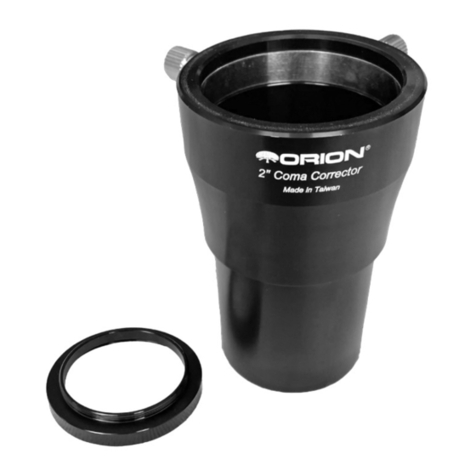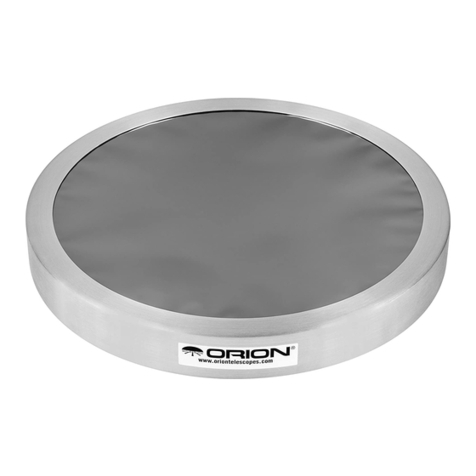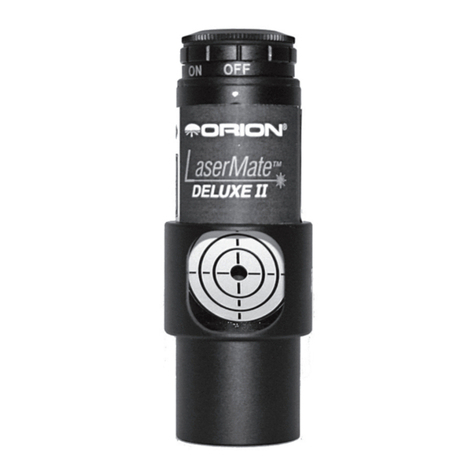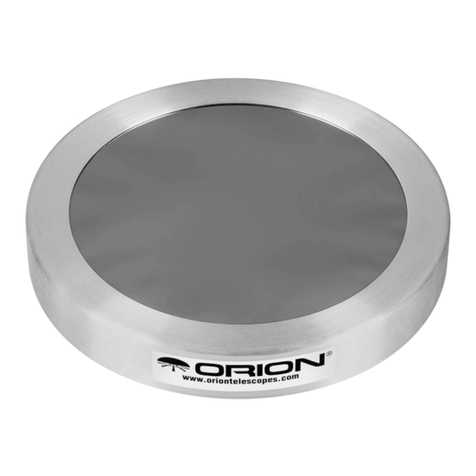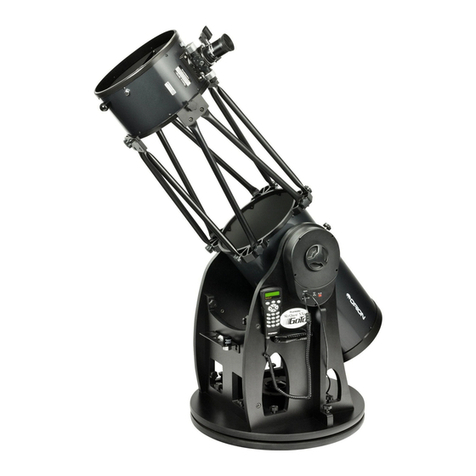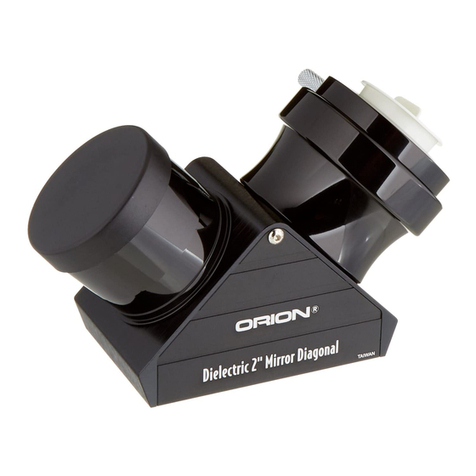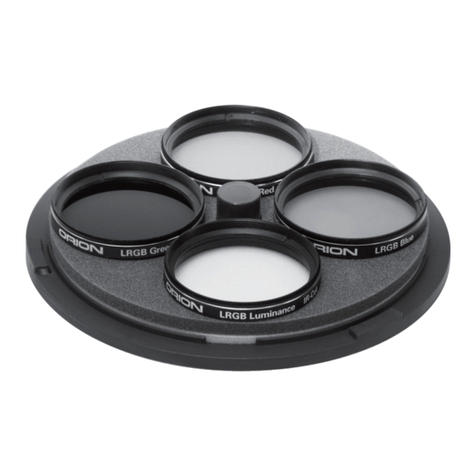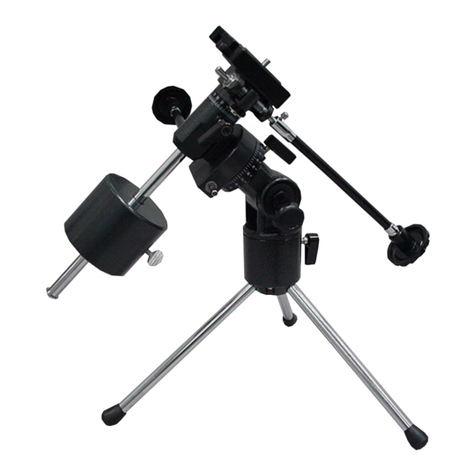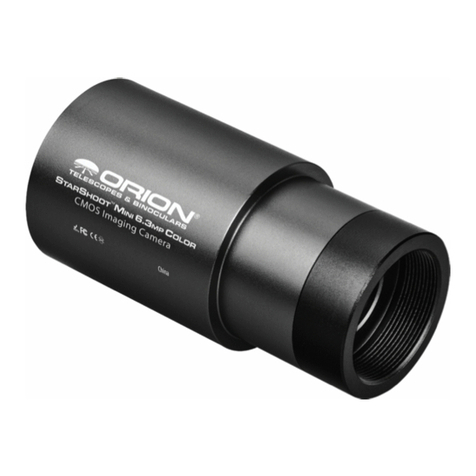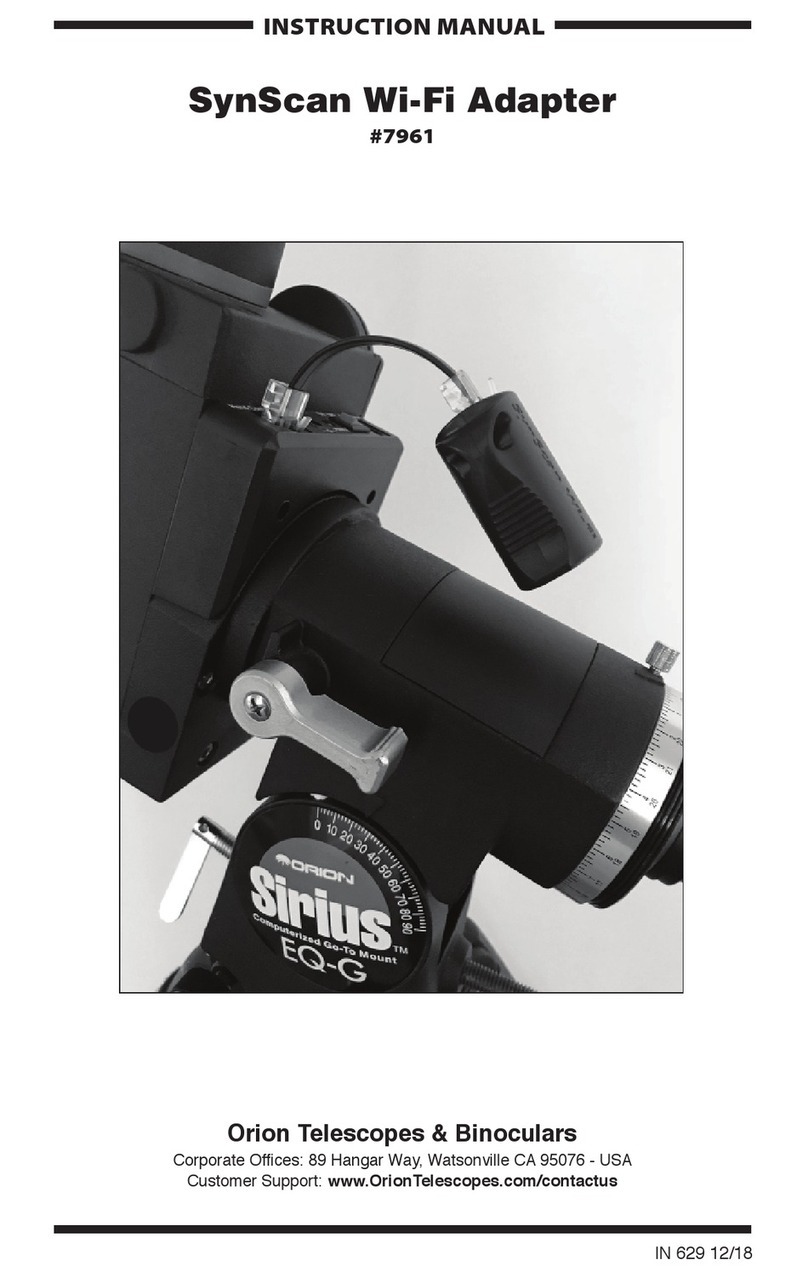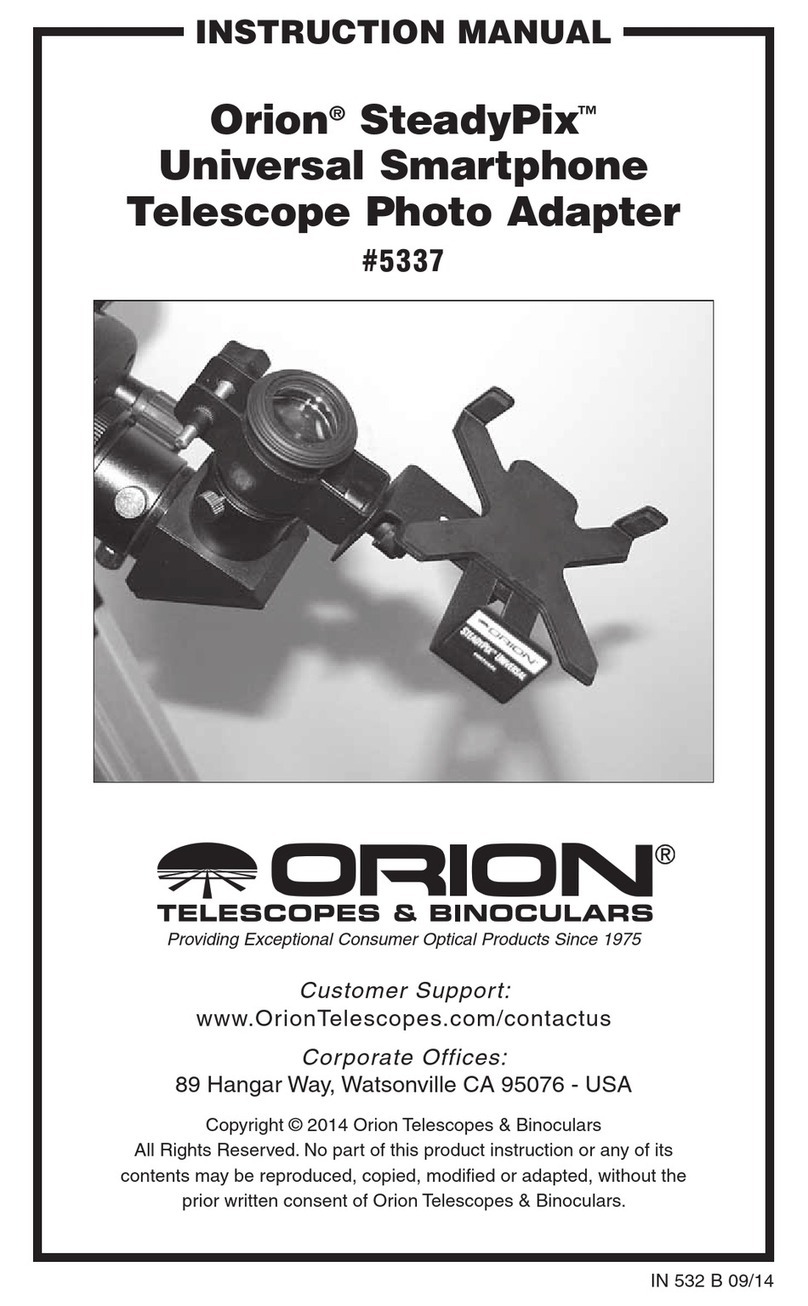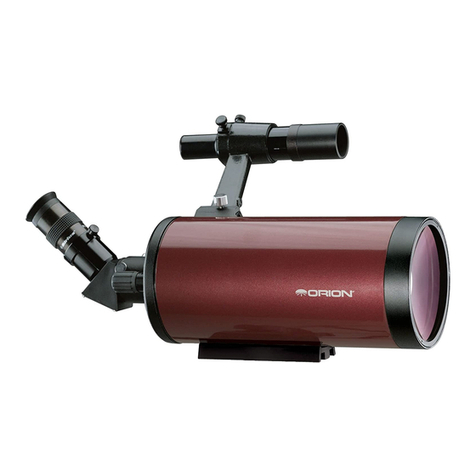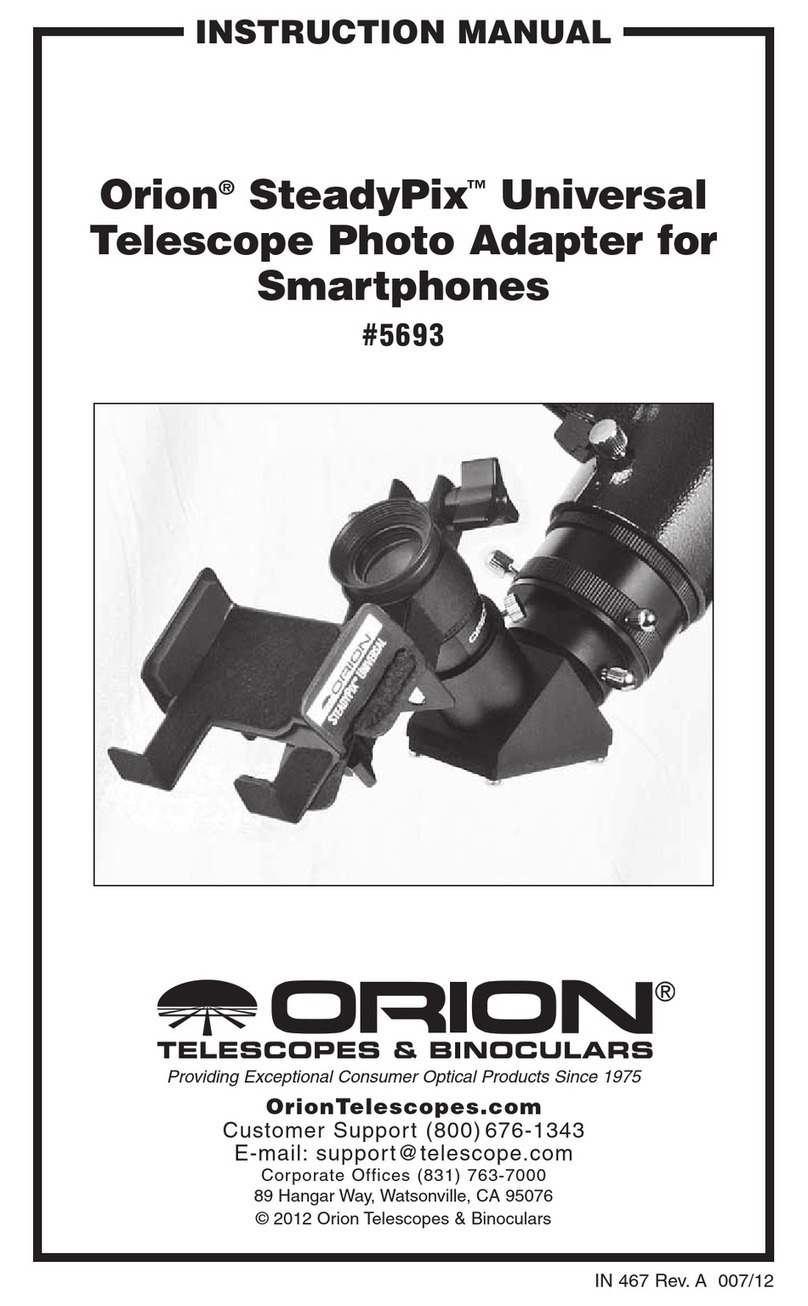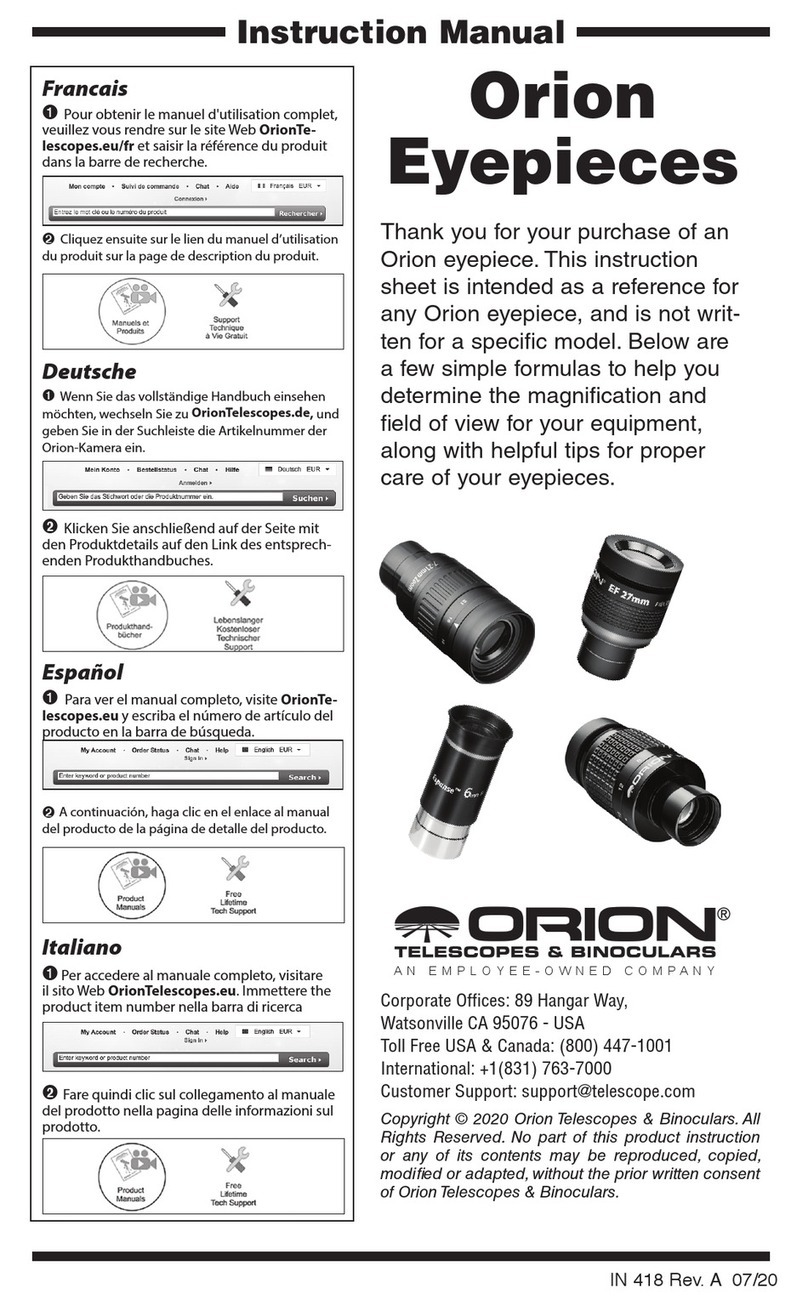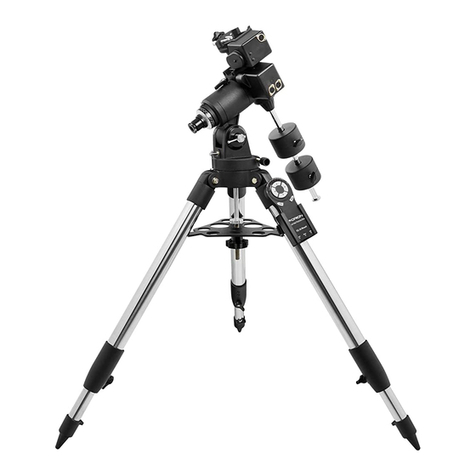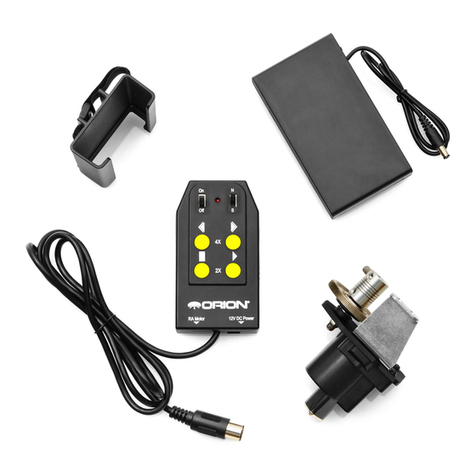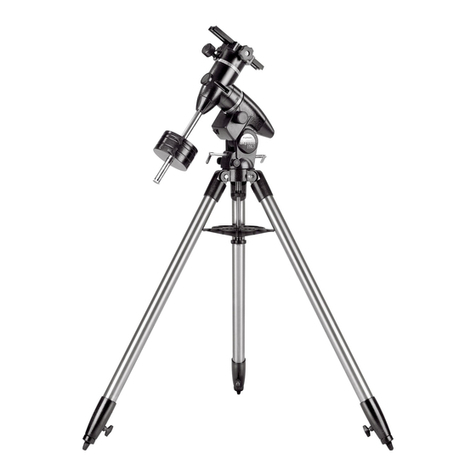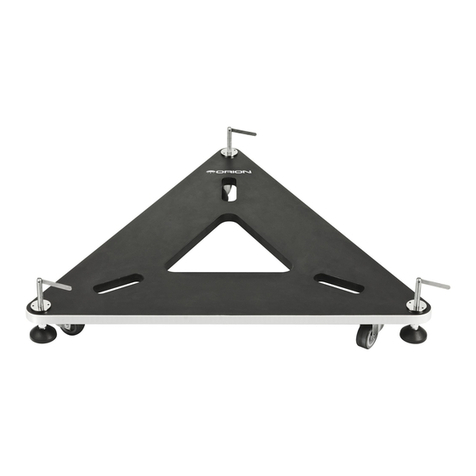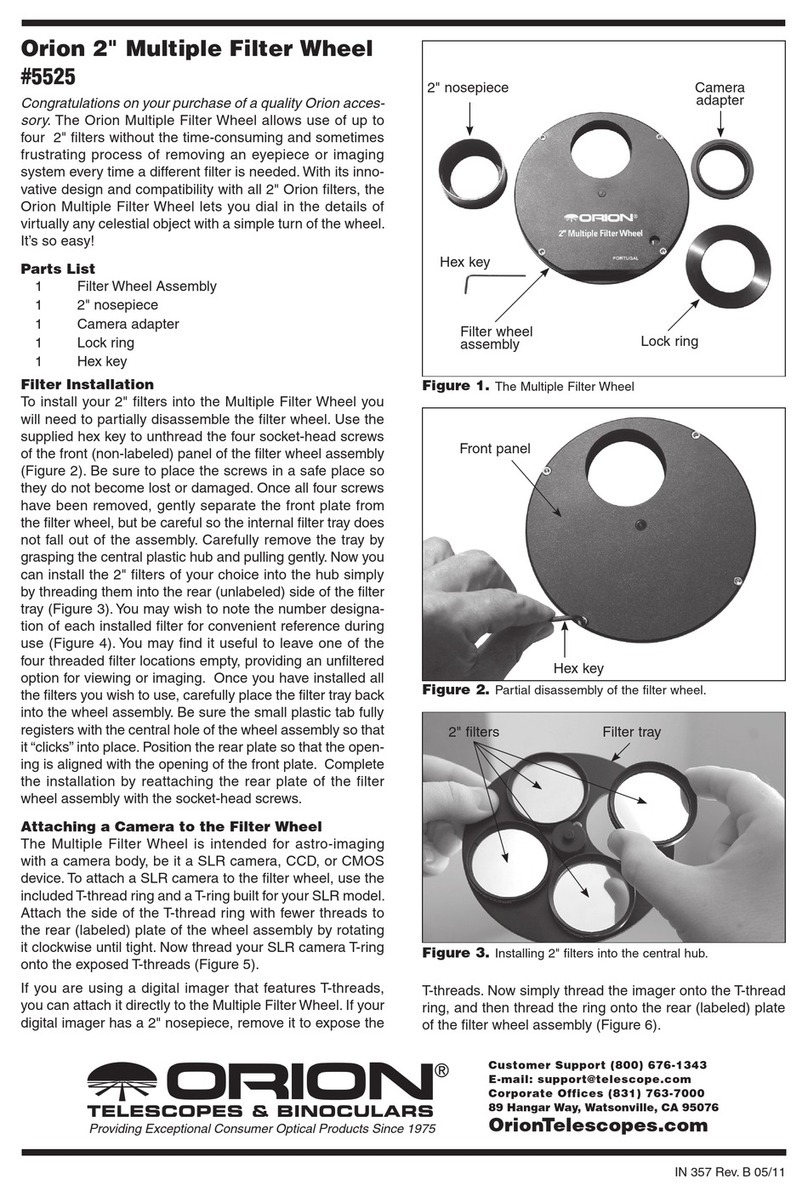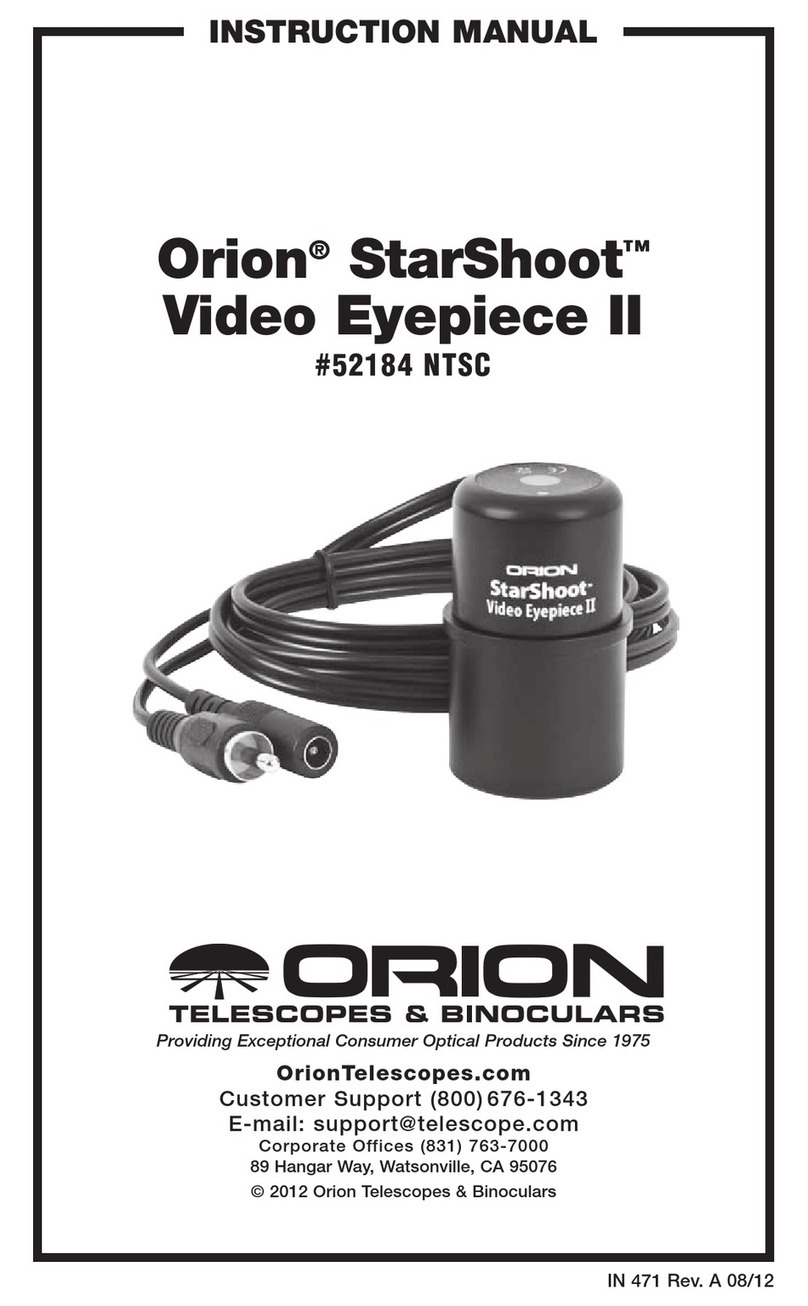
18 19
Advanced Autoguider Settings
The Advanced Parameters (the brain icon) in PHD Guide allows you to change
several settings to better customize the guiding performance of your StarShoot
3MP. Under normal use, you should not have to make any major adjustments to
the Advanced Parameters. All of the calibration and autoguiding is done auto-
matically simply by pressing the PHD Guide icon. However the following settings
can be adjusted to cater to your specific guiding setup:
Advanced Parameters
R.A. Aggressiveness: Adjusts the percentage of R.A. correction per step. The
default value is 100, meaning that the guider will move the full distance of the
correction. If the seeing conditions are not steady, the aggressiveness can be
turned down to smooth out the quick movements and reduce the correctional
movement.
R.A. Hysteresis: Implements a percentage of the previous averaged tracking
corrections to the current tracking corrections. This setting can be useful if you
are experiencing some wind or severe periodic error, since the guider will partially
ignore some of the radical movements and repeat a percentage of the previous
tracking corrections.
Dec Guide Mode: Allows Dec guiding to be turned on or off, or switched which
side of drift to guide on, or auto which will find the side of drift (N/S).
Dec Algorithm: Settings that attempt to smooth the declination corrections to
one consistent movement and can be used to resist switching directions in Dec.
Calibration Step: Adjusts how long each guide pulse is during calibration. The
default is 500 milliseconds. The calibration step can be increased to provide a
better sample of movement. However, if the calibration step is increased too
much, the guide star will move out of the camera’s field of view during calibration.
Min. Motion: Number of pixels the star must move before PHD will make a guid-
ing correction. The default is 0.25 pixels.
Search Region: The area in pixels that the guide star is searched for and looked
at. The default is 15x15 pixels. Under normal use, this setting should not be
changed.
Noise Reduction: Choose from 2x2 mean or 3x3 median to smooth out noise
and blur out hot pixels.
Time Lapse: This setting optionally sets a delay between each guiding correc-
tion. For mounts that track exceptionally well, you can add a delay between each
correction.
Gain: The gain adjusts the camera’s internal brightness level and sensitivity. The
default is 95%. If you are experiencing excessive noise or hot pixels, you can
reduce the gain. The camera remains very sensitive as low as 50% gain. If you
are guiding on a very bright guide star, you can afford to turn down the gain and
further decrease the noise in your image.
Force Calibration: Enabling this setting makes PHD Guide calibrate every time
a new star is chosen. If you move your telescope to another object in the sky,
you will need to recalibrate the autoguider. The default has this setting enabled.
Log Info: You can log all actions into a text file saved in the PHD directory.
Disable Guide Output: This setting deliberately shuts off the autoguider output
for potential troubleshooting measures.
Autoguiding Tips & Tricks
If all conditions are ideal, and your tracking is superb, you typically do not have to
alter any of the camera’s default settings. However, if your setup is tracking much
worse than usual (such as a night with high wind or poor seeing), you may need
to customize your settings to better adapt to the current conditions in the field.
Reduce the R.A. Aggressiveness in the Advanced Parameters menu to bet-
ter stabilize the guiding during bad seeing or wind gusts. You may also want to
decrease the R.A. Aggressiveness if your guiding exposures/corrections are
set very quickly (less than 1 second). If the guider sends several corrections per
second to the mount, the mount’s movement may osculate due to the response
time of your mount. Additionally the varying seeing conditions makes the star
appear to jump around rapidly and cause the guider to make unnecessary cor-
rections, sometimes referred to as “chasing the seeing”. If seeing is poor, keep
the guiding correction intervals/exposures to 1 second or more. For most guide
scopes, we recommend setting the autoguide exposures between 1-4 seconds
for best results.
Polar Alignment
A good polar alignment of your EQ mount is of critical importance for long-expo-
sure imaging. Inaccurate polar alignment leads to field rotation, even with the
autoguider tracking. If your equatorial mount uses a polar axis finder scope, we
highly recommend utilizing it for polar alignment. If not, a technique known as the
“drift method” of polar alignment has been used for many years, and can achieve
an extremely accurate polar alignment. Unfortunately it is very time consuming,
since the drift of a star over time must be observed. The basic idea is to let the
telescope mount track while watching a star to see which way the star drifts.
Note the direction of the drift, and correct by moving the mount in the appropriate
direction.
To perform the drift method of polar alignment:
1. Do a rough polar alignment by pointing the R.A. axis of the mount at Polaris
(the NorthStar).
2. Find a bright star near the meridian (the imaginary line running north-to-south
through zenith) and near the celestial equator (zero degrees declination). Point
the telescope at this star, and center it in an illuminated reticle eyepiece (avail-
able from Orion). If you don’t have an illuminated reticle eyepiece, use your
highest- magnification eyepiece.
